DIAMOND
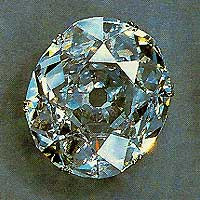 Characteristics of the mineral.
Characteristics of the mineral.
Native crystalline carbon (it is formed in the crust at the site of the fall of a large meteorite under the influence of instantaneous high pressure and temperature). The ideal diamond is colorless and transparent, but can be yellow, green, blue, blue, smoky-brown, pink-lilac, milky-white, gray and black. It can be painted black, yellow, brown, blue, but for the jewelry industry, colorless transparent or blue diamond is most often used. In the XX century diamonds were widely synthesized, mainly for industrial needs. A diamond is called a cut diamond of jewelry quality. The bulk of the mined diamonds are non-lethal technical stones, only a fraction of a percent are suitable for jewelry processing. To measure the weight of diamonds, a metric carat is accepted - 0.2 grams or 200 milligrams. Diamonds weighing more than 15 carats - a rarity, weighing hundreds of carats - the greatest rarity. To date, only 26 diamonds are known in the world, the initial mass of which exceeded 400 carats. Such stones get their own names, world fame and a solid place in history.
In a properly cut diamond, the "game" is the most effective property: it splits the white light into the brightest spectrally pure sparks, flashing and fanning around the faceted core. This property of diamond is due to the fact that the index of its refraction sharply differs for rays of visible light with different wavelengths. He decomposes the white ray like an optical prism into fan-outgoing rays of all colors of the spectrum. The trimmed diamond seems more flat than it really is.
The basis of the diamond is the atoms of pure carbon, which exist deep underground, undergone intense heating and pressure for billions of years. Over time, under pressure and at high temperature, as a result of a volcanic explosion, rocks and diamonds appeared in the rock on the surface of the earth. The explosion gave birth to a deep and wide cavity, called a kimberlite pipe; Such deposits of diamonds are known as primary deposits. The remaining diamonds were washed with water as a result of soil erosion - these are diamond placers. Such deposits are found in many parts of the world, but the largest large industrial deposits are concentrated in Angola, Australia, Botswana, Namibia, South Africa, Russia and Zaire, where 80% of all diamonds of the world are mined. The first deposits of diamonds appeared on the surface of the earth about 2.5 billion years ago. The newest diamond deposits are 50 million years old. A certain number of technical diamonds were formed when a meteorite struck the ground.
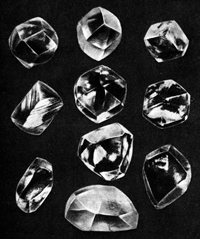 It is necessary to extract and sift 250 tons of ore in order to get 1 carat of natural diamonds. When cutting an unprocessed diamond loses 40% -60% of its weight, which means that all efforts have led to the extraction of 0.5 carats of cut diamonds, which you see on the shelves of jewelry stores. For reference - this is, for example, one solid diamond with a diameter of 5.25 mm or 16 diamonds with a diameter of 2 mm. It should also be borne in mind that only one-fourth of all natural diamonds are suitable for cutting a diamond (that is, it is necessary to sift 1000 tons of ore an average).
It is necessary to extract and sift 250 tons of ore in order to get 1 carat of natural diamonds. When cutting an unprocessed diamond loses 40% -60% of its weight, which means that all efforts have led to the extraction of 0.5 carats of cut diamonds, which you see on the shelves of jewelry stores. For reference - this is, for example, one solid diamond with a diameter of 5.25 mm or 16 diamonds with a diameter of 2 mm. It should also be borne in mind that only one-fourth of all natural diamonds are suitable for cutting a diamond (that is, it is necessary to sift 1000 tons of ore an average).
Absolutely colorless diamonds in nature are quite rare. Usually they have some kind of shade (bloom). There are also intensely colored diamonds of yellow, orange, green, blue, blue, pink, brown, milky white, gray, black. The color of diamonds is associated with various defect-impurity centers in the crystal structure, and sometimes with inclusions of a number of minerals. The most common yellow color can have a different origin.
Diamond is the first class gem. However, its strong shine and "play" are revealed only after processing. Diamond has an anisotropy of hardness, which is expressed in the fact that the hardness differs somewhat at different faces and in different directions. Diamond is processed according to the least wear-resistant directions. With the correct cutting of the diamond, all the light that falls on it through the crown is completely reflected from the faces of the pavilion. When viewing a diamond for light, only one luminous point in the colette is visible. Because of the total internal reflection, you can not see anything through the diamond, it is an indicator of the correctness of the cut. A high refractive index of a diamond when viewed through a pad creates the illusion of a much smaller thickness of the stone than it actually is.
Diamond at ordinary temperatures is chemically inert. Acids, even the strongest, do not act on it. At high temperatures, the diamond acquires a chemical activity. Diamond is not wetted by water, but adheres to fatty mixtures. The "diamond pencil", equipped with a felt end and dressed with special fatty ink, which leaves a continuous line on the surface of the diamond and dotted on most imitations with high (above 1.8) refractive index, is based on the property of diamond to be wetted with fats. The thermal conductivity of a diamond is many times greater than the thermal conductivity of imitations. A reliable method of identifying diamonds is the transmission of X-rays through it. Diamond, unlike most minerals, synthetic stones and glasses, is completely transparent and invisible in X-rays.
Today, diamonds successfully imitate fianites (cubic zircons, zirconium oxides). It must be remembered that not only diamonds scratch glass (glass also scratches topaz, corundum and quartz crystals). Attention! Unlike counterfeits and synthetic substitutes, faceted diamond has sharp edges and corners, and in cubic zirconia and other imitators they are rounded. In addition, synthetic phianites (zircons) are noticeably heavier than diamonds.
Magic properties of stones.
The owner of the diamond provides courage, the ability to overcome all obstacles and defeat enemies, invincibility in battle, indestructibility, and also protects his body from any damage from outside. However, all the positive qualities of a diamond are related to the fact that the owner should be honest, and if it is a person of another warehouse, then the stone will necessarily bring him a lot of trouble. Therefore, legends and historical evidence almost always tell us that the largest and most famous stones - diamonds or already cut diamonds - have been "bloody" ways to their fame. Diamonds (diamonds) were often worn as amulets also in order to avoid the attack of wild animals, especially when traveling. Diamond saved his owner from spleen, bad mood, sudden bouts of rage and anger, lust and lust.
The diamond has a number of interesting properties: it, for example, begins to glow if the crystal is exposed to directional ultraviolet or cathodic radiation. Its energy radiation, its true color is deep blue, so it is used in treatment with blue light / color in color therapy.
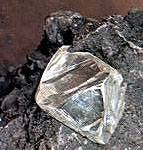
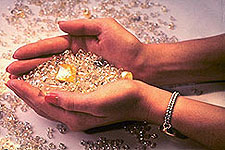
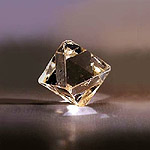
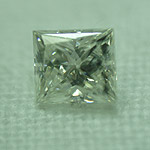
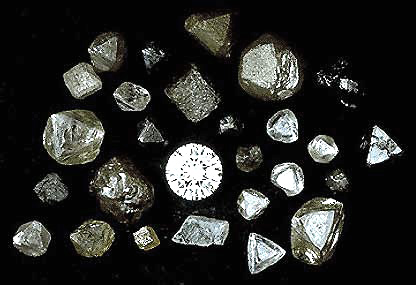

Poisonous and radioactive dangerous stones and minerals
** - poisonous stones and minerals (mandatory check in the chemical laboratory + explicit indication of toxicity).
** - radioactive stones and minerals (mandatory check on the standard dosimeter + ban on open sales in the case of radioactivity over 24 milli / g / h + additional measures of population protection).
All rare stones are subject to mandatory inspection at the standard dosimeter for the permissible level of radiation and in the chemical laboratory for the absence of poisonous and evaporating components that are dangerous to humans and the environment.


Comments
When commenting on, remember that the content and tone of your message can hurt the feelings of real people, show respect and tolerance to your interlocutors even if you do not share their opinion, your behavior in the conditions of freedom of expression and anonymity provided by the Internet, changes Not only virtual, but also the real world. All comments are hidden from the index, spam is controlled.